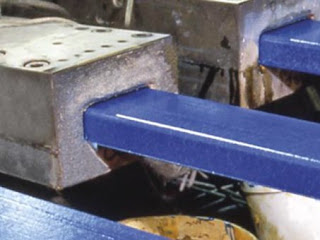A basic definition of Fiber Reinforced Polymer (FRP) is a composite material comprised of fiber (aramid, carbon, or glass – being the most common) and polymer resin commonly referred to as epoxy. FRP is a generic term for Aramid Fiber-Reinforced Polymer (AFRP), Carbon FiberReinforced Polymer (CFRP), and Glass Fiber-Reinforced Polymer (GFRP). FRP used for strengthening civil structures traces its roots to the mid-1980s with the first installations occurring in Europe and Japan. Today, thousands of rehabilitation projects around the globe have employed these composites to add strength to concrete, masonry, timber, and steel structures.
The motivation to develop FRP for civil structures was to provide an alternate to conventional strengthening methods. Some of the conventional methods include steel plates epoxy-bonded to concrete, steel plates bolted to concrete, and steel plate jacketing of round, square, and rectangular concrete columns. The obvious disadvantage of conventional methods is that they are heavy and difficult to install. In addition, once steel yields, it will stretch with little strength gain. However, FRP is linear-elastic to failure. It has roughly the same tensile modulus as steel; thereby, making it a nice alternative to steel.
Contact Process Systems & Design to discuss more about the use FRP in industrial process design and construction. Visit https://www.processsystemsdesign.com or call (410) 861-6437.
Providing information on bulk materials handling (liquid and solid), plant systems engineering, specialty machine design, and process control engineering. Industry focus for the following posts are bulk handling systems, E-Liquid (E-Juice) manufacturing equipment, Biomass, plastics and polymers. For more information, visit PS&D or call (410) 861-6437
Showing posts with label Pultruded FRP Composites. Show all posts
Showing posts with label Pultruded FRP Composites. Show all posts
Friday, January 19, 2018
Tuesday, December 19, 2017
Pultruded FRP Composites as an Alternate to Steel
 |
| Pultruded FRP suspendible roof structure. |
Pultruded composite sections can be used to design and install lightweight, corrosion-resistant and electrically non-conductive alternatives to steel structures, particularly where speed and ease of construction are important. Pultruded FRP has performance characteristics similar to other construction metals, but unlike steel, it is EM/RF transparent and doesn’t disrupt equipment signals.
Benefits:
- Pound-for-pound stronger than steel.
- Comparable structural performance to other metals such as aluminum, but without the conductivity, corrosion or impact limitations.
- Can be painted, coated or pigmented during manufacture for little-to-no maintenance in highly aggressive environments
- Designed for UV performance
- Enables rapid cleaning with aggressive solvents at high pressures
- Meets industry requirements for durability, smoothness, absorbency, color, corrosion resistance and washability
- Structural profiles and plates
- Decking and planking
- Platforms, stairs, ladders and cages
- Handrails, guarding and kickplates
- Grating and gridmesh
- Bridge components
- Structural building panels
- Sheet piling and round pile
- Containment systems
- Ballistic and storm panels
- Connection hardware
Pultruded FRP composites are ideal for structural elements where a strong, lightweight material is needed; corrosion is a concern for steel or other metals; RF permeability is needed; and low thermal or electrical conductivity is important.
To discuss using pultruded FRP composites on your next project, contact Process Systems Design by calling (410) 861-6437 or visit https://www.processsystemsdesign.com.
Subscribe to:
Comments (Atom)
